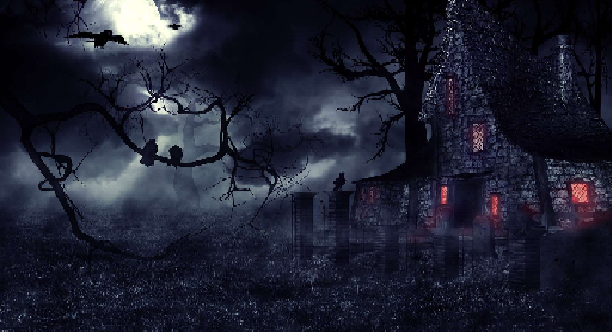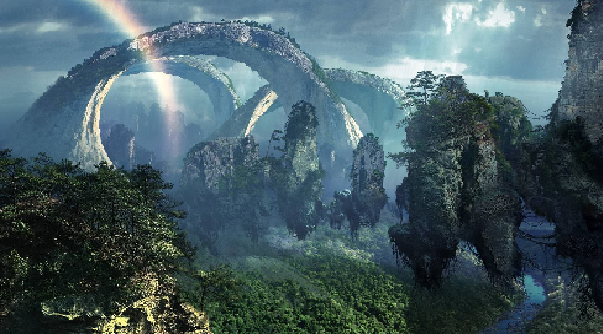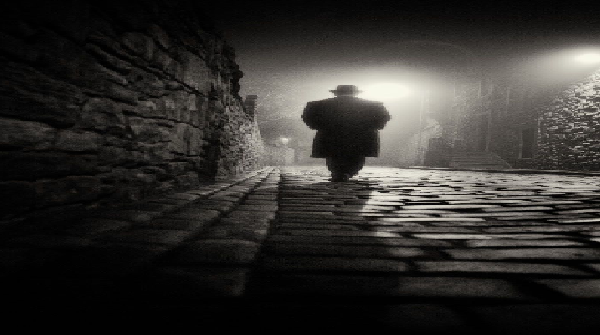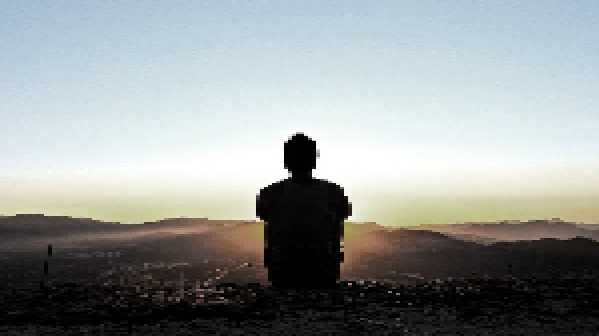1. COMEDY FILM

A comedy film is a genre of film in which the main emphasis is on humour. These films are designed to make the audience laugh through amusement and most often work by exaggerating characteristics for humorous effect. Films in this style traditionally have a happy ending (black comedy being an exception). One of the oldest genres in film – and derived from the classical comedy in theatre –, some of the very first silent movies were comedies, as slapstick comedy often relies on visual depictions, without requiring sound. When sound films became more prevalent during the 1920s, comedy films took another swing, as laughter could result from burlesque situations but also dialogue.
Comedy, compared with other film genres, puts much more focus on individual stars, with many former stand-up comics transitioning to the film industry due to their popularity. While many comic films are lighthearted stories with no intent other than to amuse, others contain political or social commentary (such as The King of Comedy and Wag the Dog).
2. HORROR FILM

A horror film is a film that seeks to elicit fear for entertainment purposes. Initially inspired by literature from authors like Edgar Allan Poe, Bram Stoker, and Mary Shelley, horror has existed as a film genre for more than a century. The macabre and the supernatural are frequent themes. Horror may also overlap with the fantasy, supernatural fiction, and thriller genres.
Horror films often aim to evoke viewers' nightmares, fears, revulsions and terror of the unknown. Plots within the horror genre often involve the intrusion of an evil force, event, or personage into the everyday world. Prevalent elements include ghosts, extraterrestrials, vampires, werewolves, demons, Satanism, evil clowns, gore, torture, vicious animals, evil witches, monsters, giant monsters, zombies, cannibalism, psychopaths, natural, ecological or man-made disasters, and serial killers.
Some sub-genres of horror film include low-budget horror, action horror, comedy horror, body horror, disaster horror, found footage, holiday horror, horror drama, psychological horror, science fiction horror, slasher, supernatural horror, gothic horror, natural horror, zombie horror, first-person horror, and teen horror.
3. WAR FILM

War is a 2019 Indian Hindi-language action thriller film directed by Siddharth Anand. It is produced by Aditya Chopra under his banner Yash Raj Films, and stars Hrithik Roshan and Tiger Shroff. The film follows an Indian soldier assigned to eliminate his former mentor who has gone rogue.
Principal photography of the film began in the second week of September 2018, and concluded in March 2019. Initially titled Fighters, the film's title was changed after the release of the official teaser in July 2019. The film's music was composed by Vishal–Shekhar, with lyrics written by Kumaar, and released under the banner YRF Music.
War was theatrically released in India in 4DX on 2 October 2019, the occasion of Gandhi Jayanti. The film received generally positive reviews from critics, with praise for the performances of Roshan and Shroff, but criticism for its predictable storyline. War set the record for the highest-opening day collection for a Bollywood film in India.
4. ROMANCE FILM

Romance films or romance movies are romantic love stories recorded in visual media for broadcast in theaters and on TV that focus on passion, emotion, and the affectionate romantic involvement of the main characters and the journey that their love takes them through dating, courtship or marriage. Romance films make the romantic love story or the search for strong and pure love and romance the main plot focus. Occasionally, romance lovers face obstacles such as finances, physical illness, various forms of discrimination, psychological restraints or family that threaten to break their union of love. As in all quite strong, deep, and close romantic relationships, tensions of day-to-day life, temptations (of infidelity), and differences in compatibility enter into the plots of romantic films.
Romantic films often explore the essential themes of love at first sight, young with older love, unrequited romantic love, obsessive love, sentimental love, spiritual love, forbidden love/romance, platonic love, sexual and passionate love, sacrificial love, explosive and destructive love, and tragic love. Romantic films serve as great escapes and fantasies for viewers, especially if the two people finally overcome their difficulties, declare their love, and experience life "happily ever after", implied by a reunion and final kiss. In romantic television series, the development of such romantic relationships may play out over many episodes, and different characters may become intertwined in different romantic arcs.
5. SCIENCE FICTION FILM

Science fiction film (or sci-fi film) is a genre that uses speculative, fictional science-based depictions of phenomena that are not fully accepted by mainstream science, such as extraterrestrial lifeforms, alien worlds, extrasensory perception and time travel, along with futuristic elements such as spacecraft, robots, cyborgs, interstellar travel or other technologies. Science fiction films have often been used to focus on political or social issues, and to explore philosophical issues like the human condition. In many cases, tropes derived from written science fiction may be used by filmmakers ignorant of or at best indifferent to the standards of scientific plausibility and plot logic to which written science fiction is traditionally held.
The genre has existed since the early years of silent cinema, when Georges Melies' A Trip to the Moon (1902) employed trick photography effects. The next major example in the genre was the film Metropolis (1927). From the 1930s to the 1950s, the genre consisted mainly of low-budget B movies. After Stanley Kubrick's landmark 2001: A Space Odyssey (1968), the science fiction film genre was taken more seriously. In the late 1970s, big-budget science fiction films filled with special effects became popular with audiences after the success of Star Wars and paved the way for the blockbuster hits of subsequent decades.
6. ACTION FILM

Action film is a film genre in which the protagonist or protagonists are thrust into a series of events that typically include violence, extended fighting, physical feats, and frantic chases. Action films tend to feature a resourceful hero struggling against incredible odds, which include life-threatening situations, a villain, or a pursuit which usually concludes in victory for the hero (though a small number of films in this genre have ended in the victory for the villain instead). Advancements in CGI have made it cheaper and easier to create action sequences and other visual effects that required the efforts of professional stunt crews in the past. However, reactions to action films containing significant amounts of CGI have been mixed, as films that use computer animations to create unrealistic, highly unbelievable events are often met with criticism. While action has long been a recurring component in films, the "action film" genre began to develop in the 1970s along with the increase of stunts and special effects. Common action scenes in films are generally, but not limited to, explosions, car chases, fistfights, and shootouts.
This genre is closely associated with the thriller and adventure genres, and they may also contain elements of drama and spy fiction.
7. CRIME FILM

Crime films, in the broadest sense, are a cinematic genre inspired by and analogous to the crime fiction literary genre. Films of this genre generally involve various aspects of crime and its detection. Stylistically, the genre may overlap and combine with many other genres, such as drama or gangster film, but also include comedy, and, in turn, is divided into many sub-genres, such as mystery, suspense or noir.
8. MUSICAL FILM

Musical film is a film genre in which songs sung by the characters are interwoven into the narrative, sometimes accompanied by dancing.
The songs usually advance the plot or develop the film's characters, but in some cases, they serve merely as breaks in the storyline, often as elaborate "production numbers."
The musical film was a natural development of the stage musical after the emergence of sound film technology. Typically, the biggest difference between film and stage musicals is the use of lavish background scenery and locations that would be impractical in a theater. Musical films characteristically contain elements reminiscent of theater; performers often treat their song and dance numbers as if a live audience were watching. In a sense, the viewer becomes the diegetic audience, as the performer looks directly into the camera and performs to it.
9. WESTERN FILM

Western is a genre of fiction incorporating Western lifestyle which tell stories set primarily in the latter half of the 19th century in the American Old West, often centering on the life of a nomadic cowboy or gunfighter armed with a revolver and a rifle who rides a horse. Cowboys and gunslingers typically wear Stetson hats, neckerchief bandannas, vests, spurs, cowboy boots and buckskins (alternatively dusters). Recurring characters include the aforementioned cowboys, Native Americans, bandits, lawmen, bounty hunters, outlaws, gamblers, soldiers (especially mounted cavalry, such as buffalo soldiers), and settlers (farmers, ranchers, and townsfolk). The ambience is usually punctuated with a Western music score, including American and Mexican folk music such as country, Native American music, New Mexico music, and rancheras.
Westerns often stress the harshness of the wilderness and frequently set the action in an arid, desolate landscape of deserts and mountains. Often, the vast landscape plays an important role, presenting a "...mythic vision of the plains and deserts of the American West". Specific settings include ranches, small frontier towns, saloons, railways, wilderness, and isolated military forts of the Wild West.
Common plots include:
- The construction of a railroad or a telegraph line on the wild frontier.
- Ranchers protecting their family ranch from rustlers or large landowners or who build a ranch empire.
- Revenge stories, which hinge on the chase and pursuit by someone who has been wronged.
- Stories about cavalry fighting Native Americans.
- Outlaw gang plots.
- Stories about a lawman or bounty hunter tracking down his quarry.
Many Westerns use a stock plot of depicting a crime, then showing the pursuit of the wrongdoer, ending in revenge and retribution, which is often dispensed through a shootout or quick-draw duel.
The Western was the most popular Hollywood genre from the early 20th century to the 1960s. Western films first became well-attended in the 1930s. John Ford's landmark Western adventure Stagecoach became one of the biggest hits in 1939 and it made John Wayne a mainstream screen star. The popularity of Westerns continued in the 1940s, with the release of classics such as Red River (1948). Westerns were very popular throughout the 1950s and 1960s. Many of the most acclaimed Westerns were released during this time, including High Noon (1952), Shane (1953), The Searchers (1956), Cat Ballou (1965), The Wild Bunch (1969) and Butch Cassidy and the Sundance Kid (1969). Classic Westerns such as these have been the inspiration for various films about Western-type characters in contemporary settings, such as Junior Bonner (1972), set in the 1970s, and The Three Burials of Melquiades Estrada (2005), set in the 21st century.
10. FANTASY FILM

Fantasy films are films that belong to the fantasy genre with fantastic themes, usually magic, supernatural events, mythology, folklore, or exotic fantasy worlds. The genre is considered a form of speculative fiction alongside science fiction films and horror films, although the genres do overlap. Fantasy films often have an element of magic, myth, wonder, escapism, and the extraordinary.
11. THRILLER FILM

Thriller film, also known as suspense film or suspense thriller, is a broad film genre that evokes excitement and suspense in the audience. The suspense element found in most films' plots is particularly exploited by the filmmaker in this genre. Tension is created by delaying what the audience sees as inevitable, and is built through situations that are menacing or where escape seems impossible.
The cover-up of important information from the viewer, and fight and chase scenes are common methods. Life is typically threatened in a thriller film, such as when the protagonist does not realize that they are entering a dangerous situation. Thriller films' characters conflict with each other or with an outside force, which can sometimes be abstract. The protagonist is usually set against a problem, such as an escape, a mission, or a mystery.
Thriller films are typically hybridized with other genres; hybrids commonly including: action thrillers, adventure thrillers, fantasy and science fiction thrillers. Thriller films also share a close relationship with horror films, both eliciting tension. In plots about crime, thriller films focus less on the criminal or the detective and more on generating suspense. Common themes include, terrorism, political conspiracy, pursuit and romantic triangles leading to murder.
In 2001, the American Film Institute made its selection of the top 100 greatest American "heart-pounding" and "adrenaline-inducing" films of all time. The 400 nominated films had to be American-made films whose thrills have "enlivened and enriched America's film heritage". AFI also asked jurors to consider "the total adrenaline-inducing impact of a film's artistry and craft".
12. DOCUMENTARY FILM

A documentary film is a nonfictional motion picture intended to document reality, primarily for the purposes of instruction, education, or maintaining a historical record. "Documentary" has been described as a "filmmaking practice, a cinematic tradition, and mode of audience reception" that is continually evolving and is without clear boundaries. Documentary films were originally called 'actuality' films and were only a minute or less in length. Over time documentaries have evolved to be longer in length and to include more categories, such as educational, observational, and even 'docufiction'. Documentaries are also educational and often used in schools to teach various principles. Social media platforms such as YouTube, have allowed documentary films to improve the ways the films are distributed and able to educate and broaden the reach of people who receive the information.